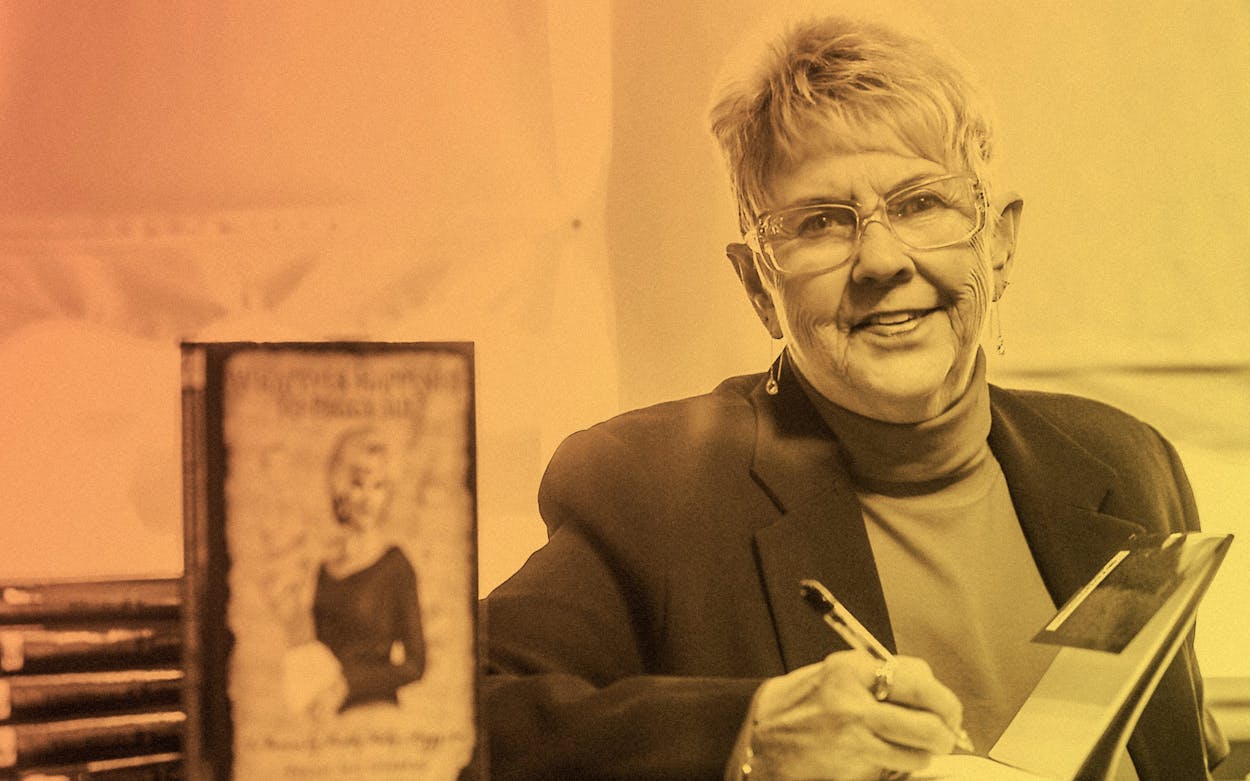The time-honored tradition among male songwriters to immortalize a woman’s name in a song dates back to the earliest days of rock and roll. Susie Q and Barbara Ann gave way to Eleanor Rigby, Maggie Mae, and Billie Jean. But among the very first of them was Peggy Sue Gerron, the Lubbock High School classmate of Buddy Holly’s who became the namesake for two of his hits—”Peggy Sue” and its follow-up, “Peggy Sue Got Married.” Gerron died on Monday morning at the age of 78, at the University Medical Center in Lubbock. Although Holly’s fans can remember her through one of the memorable melodies that’s ever been recorded, the life she lived had a rhythm and beat of its own.
Throughout her life, Gerron seemed pleased to have been the namesake for Holly’s hits. She maintained a website about herself, Peggy Sue Online, and published a memoir in 2008, Whatever Happened to Peggy Sue?—but the life she lived extended beyond her association with rock and roll history.
Gerron and Holly never dated. Rather, she dated his Crickets bandmate Jerry Allison, and was a high school senior when “Peggy Sue” became an international sensation. (The song, initially called “Cindy Lou,” was renamed for her during a brief break-up between the two, which checks out with the lyrics.) Gerron and Allison married after she graduated high school, and remained together through much of the 1970s. Following their divorce, she moved to Pasadena, California, where she became a dental hygienist and remarried. Her second husband was a plumber, and the two launched a business. Gerron became, according to her website, the first woman licensed as a plumber in the state of California. In the mid-1990s, Gerron returned to Lubbock to care for her mother. She was known as a ham radio enthusiast, and would pick certain frequencies for people to tune in and talk to the Peggy Sue.
Sure, it’s less sensational than being the namesake of one of the biggest hits of early rock and roll, but it’s also the stuff of life. It’s notable that Gerron—who enjoyed her role in rock and roll history—wanted people who had been singing her name since she was a teenager to know that there was more to her than just having served as an inspiration to Buddy Holly and the Crickets. On her website, Gerron wrote that “Peggy Sue is much more than a song. The girl next door grew up. She became a wife, mother, grandmother, small business owner, writer, radio personality, and the list goes on.”
It is, presumably, a jarring thing to have a high school classmate and a bandmate of your teenage boyfriend turn your name into a symbol of an era. “Peggy Sue” is emblematic of fifties nostalgia—Francis Ford Coppola tapped into that in the eighties with Peggy Sue Got Married, about a time traveler who revisits a simpler time. For the majority of her life, Gerron moved through the world aware that people sang her name to evoke that feeling. She seemed to enjoy the minor element of celebrity that it gave her, but also seemed concerned with defining herself beyond the name that was made famous. Gerron’s life may have experienced its most public novelty in 1957, but it went on for another sixty years after that. Now, after her death, it’s worth remembering not just the nostalgia of the 1950s, but the fact that an ordinary life is worth celebrating too.
- More About:
- Music
- Buddy Holly








